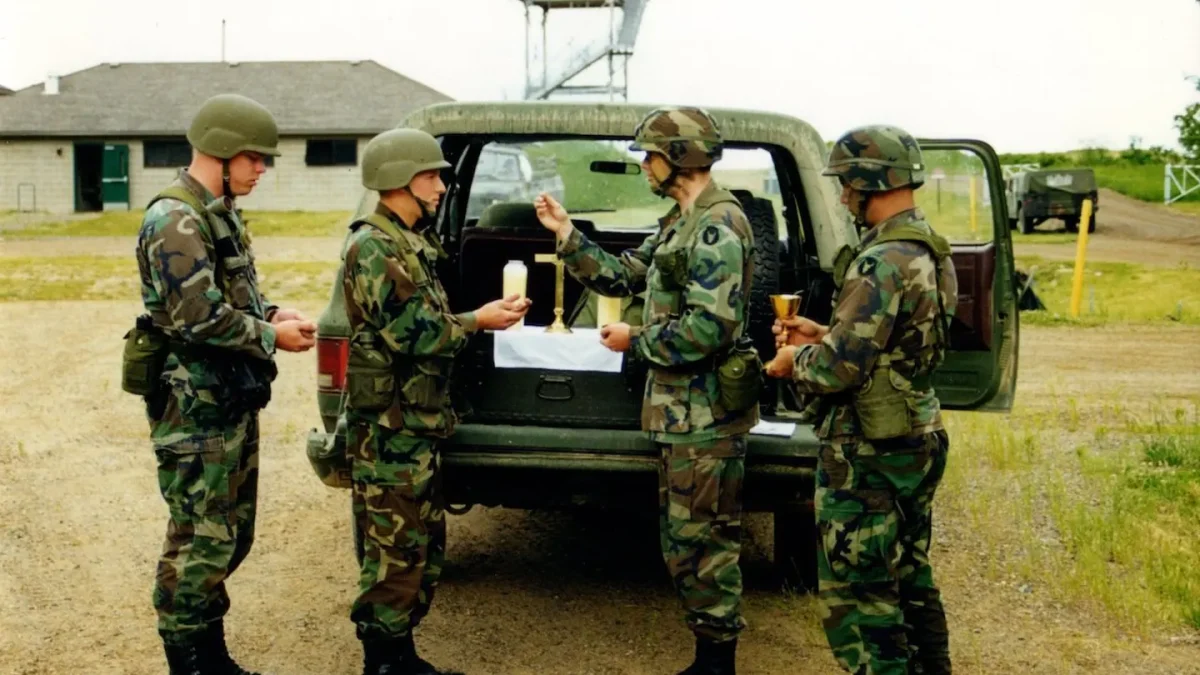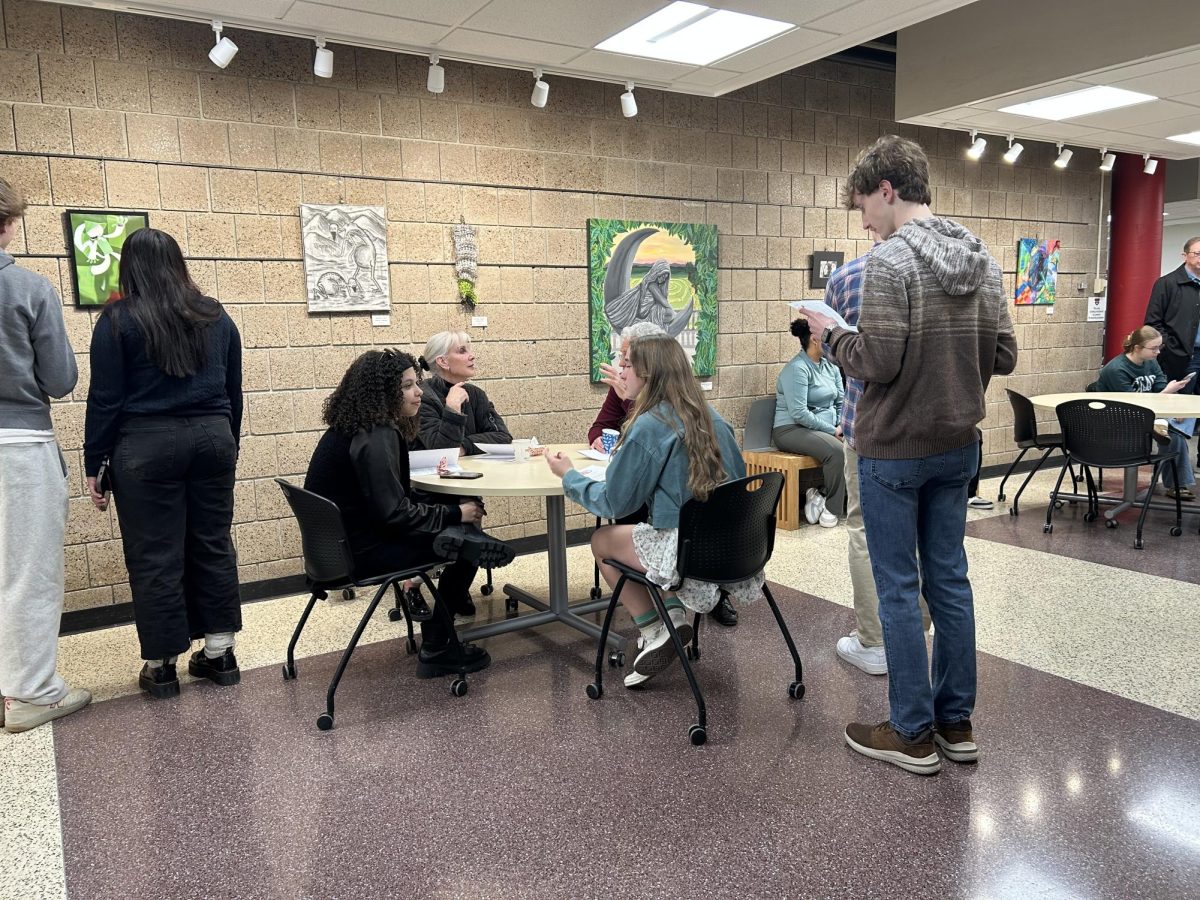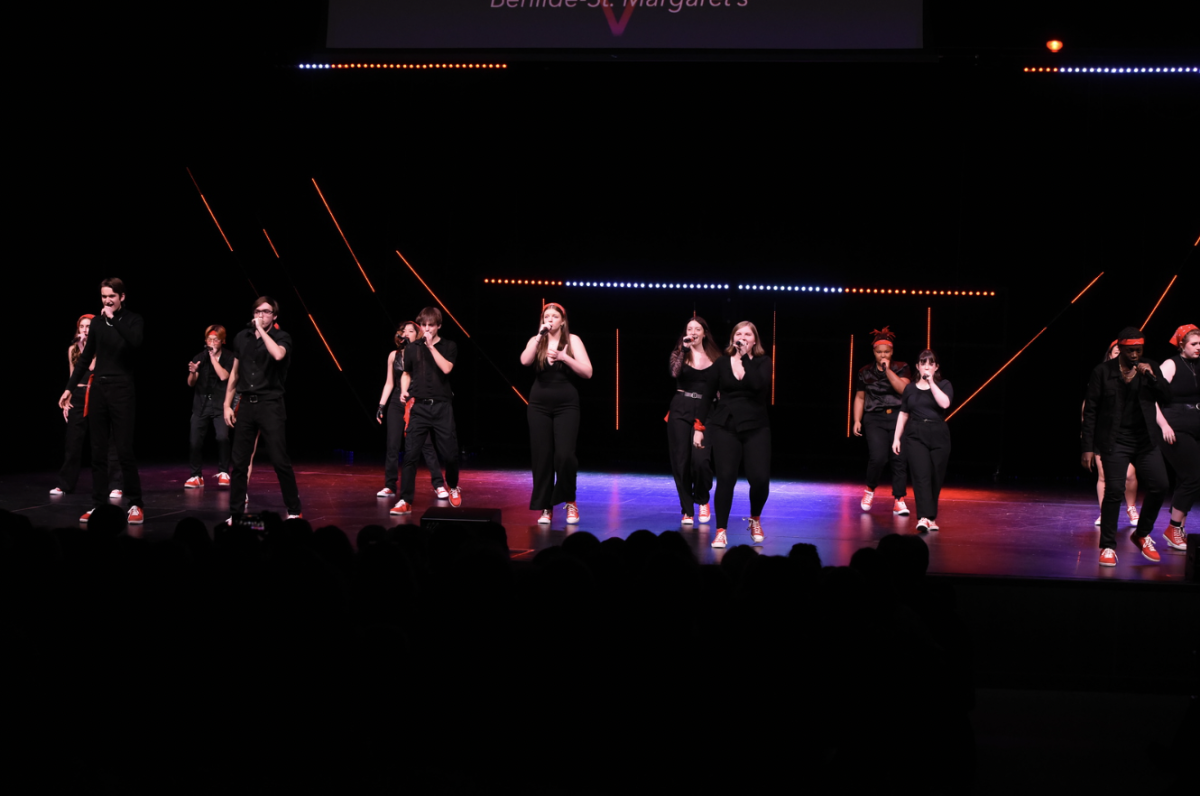This February, the Benilde-St. Margaret’s Red Knotes a cappella group took the International Competition of High School A Cappella (ICHSA) Quarterfinals stage with their matching red Converse, a set of three songs, and excitement to live out their Pitch Perfect dreams. However, while the group commanded the stage with confidence this February, the preparation began months prior, down in BSM’s small, homey choir room.
Directed by BSM’s choir director, Miriam Augsburger, the BSM Red Knotes are an audition-based and mixed voice choir that specializes in contemporary a cappella music. While the Red Knotes are technically a choir, they are very distinct from the rest of BSM’s choirs, and understanding a cappella is key to understanding this distinction. According to The International School of Music, a cappella is a genre of music without accompaniment, where vocalists mimic the sounds of instruments solely using the human voice. The Red Knotes do just that. “We have four different vocal parts…and each of those parts has a different part of the song or notes and different sections that they learn. So, all of that comes together to create some really cool harmonies. And something also cool about a cappella is we have vocal percussion, which is when people make noises like drums and beats with their mouth, so that we don’t have to use any instruments when we’re singing,” Red Knotes member Elizabeth Cornell said.
This year, the Red Knotes combined their vocal parts to execute three a cappella arrangements at their fourth consecutive appearance on the ICHSA. Their ten-minute performance this year was a result of months of hard work and dedication. “We put in a lot of really hard work, and I don’t think a lot of people realize what it takes to prepare for our competition and the amount of [work] goes into a song,” Cornell said.
This year, the ICHSA preparation officially began in November when the group received their arrangements for their three songs: “Abbey” by Mitski, “Nobody’s Soldier” by Hozier, and “Good Luck Babe!” by Chappell Roan. They began by learning the songs together, solidifying each different vocal part. While the finished product is rewarding, at this stage in preparation, solidifying each vocal part in one song can be a challenge. “[It’s challenging] working with different parts because not all of them match, and you’ll be on different rhythms or different ranges at the same time,” Red Knotes captain Ryan Lynch said.
Despite the challenging task, the group successfully solidified their adaptations of each arrangement. However, while solidifying the songs alone was a huge accomplishment, the performance preparation was far from over. The members knew that the second each song is memorized and clean, the class would move from the choir room to the theater to take the next daunting step in their road to a competitive performance: choreography. In addition to the challenge of maintaining their vocal part, each member is also tasked with memorizing and executing intricate choreography for each song. “It’s also kind of challenging because we do choreography with our music, so you have to focus on your brain learning two different things at once and not forgetting about one to do the other,” Cornell said.
In addition to being able to maintain the correct vocals and execute the choreography, the group also needed to remember many other important aspects during their performance. Each member was responsible for maintaining correct microphone technique, staying in tune, doing the correct choreography, staying synchronized, keeping exaggerated facial expressions, and overall performance quality. “It’s all about performance quality. It’s a lot about facial expressions, although, using the microphone, it covers the mouth, so the audience can’t see your mouth. So, it’s really about using your eyes a lot and making sure your movements are really sharp and unified. So, we spend a lot of time on synchronization,” choir director Miriam Augsburger said.
The Red Knotes put in countless hours of hard work, in which each member had to push themselves out of their comfort zones during rehearsal, and their performance at ICHSA was evidence of their dedication. The group successfully performed their ten-minute set, and took full advantage of the opportunity to perform in a professional setting and supportive environment. “It was just a really positive space. Everyone was cheering for us when we were singing, and it just felt really supportive. Something else that I kind of liked about performing is [the venue] had a really cool sound system so it was really cool to hear myself and the vocal percussion. It just made the whole set sound a lot cooler and made me feel a lot more official when I was up there,” Cornell said.
The group’s performance earned themselves significant applause, and even attention from the BSM community. After their ICHSA performance, the Red Knotes showcased their set to the BSM community, and spectators were impressed with the talent on the Hamburge Theater stage. “I was blown away. I felt the passion and power on the stage …it was really [cool] to see that they can dance and sing at the same time,” senior Kate Jaeger said.
Along with their successful ICHSA performances, the Red Knotes were rewarded with more than just applause but also with the community they built in the process. The members cherish the community they built in their little, homey choir room, and value the friendships that their shared love for music brought them. “A community has just been built [because of] how much time we spend together, and basically we’re all suffering together with having to learn everything in [so quickly]…it’s basically just team bonding,” Lynch said.
As the Red Knotes reflect on their preparation and performance, they hope that their performance will facilitate greater appreciation for a cappella and music at BSM. Members also hope that their performances will encourage current and upcoming Red Knights to join the Red Knotes, and are hoping they can further grow the special a cappella community at BSM. “I hope that [audience members] got to see how a cappella is as an art form and grow some appreciation for it. But for those that were in the audience that maybe also sing, I hope that they’re willing to maybe put themselves out there and try a cappella,” junior captain Nico Peterson said.






































![Teacher Lore: Mr. Hillman [Podcast]](https://bsmknighterrant.org/wp-content/uploads/2025/03/teacherlorelogo-1200x685.png)



